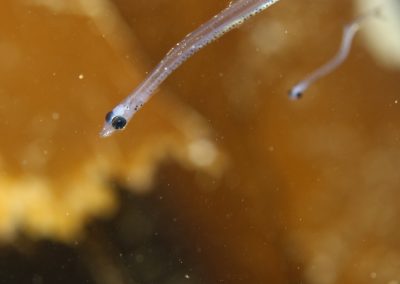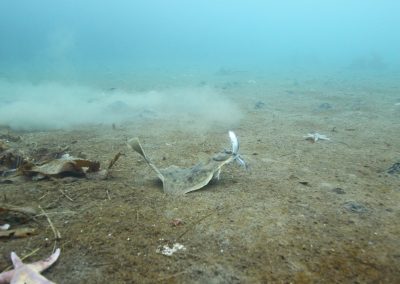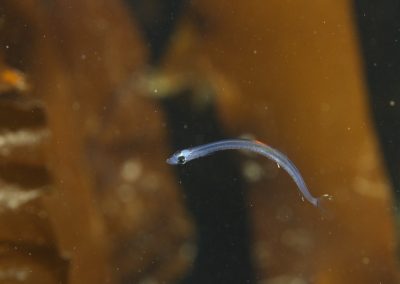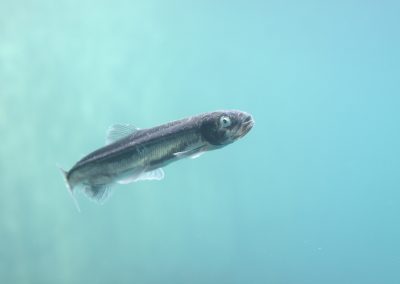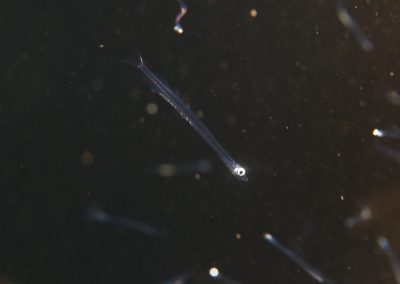Capelin
Mallotus villosus
The capelin is possibly the most ecologically important fish in Icelandic waters. It is a small pelagic fish, usually between 15 and 18 cm in catches and has a very short life cycle.
Distribution
Except for the need to spawn in relatively warm waters, the capelin is a cold-water species. It is found in the North Atlantic from Newfoundland and Greenland in the west to the Barents Sea and along northern Russia in the east. A closely related species occurs in the North Pacific, from Korea in the western part and to British Columbia in the eastern part.
Ecology
It spawns in late winter along the south and southwest coast of Iceland at ocean temperatures of 4°-7°C. The eggs and larvae drift north to the continental shelf of North Iceland or Greenland. It gradually migrates further north as it grows and spends the time before maturity feeding in the Iceland Sea on zooplankton, mainly copepods. Maturity is usually reached at the age of 3 to 4, but some become mature one year earlier or later. At this time, they condense into large schools and migrate around Iceland, usually clockwise to the spawning grounds in the south. During these migrations, the capelin becomes the main food of many species in Icelandic waters, most importantly the cod. Spawning takes place in very shallow waters and is a very intense behaviour. After spawning all the males and most of the females die. The oldest capelin ever found was a 10 year old female off Newfoundland.
Capelin has a key role in the food chain between animal plankton and fish. Most fish, but especially groundfish, feed on capelin at some stage in their life and it is estimated that capelin may be 40% of the total food of cod. As the stock of capelin migrates to the southwest coast of Iceland in March for spawning it meets the bulk of the mature cod stock, ready for the feast.
Fisheries
After the collapse of the herring stocks, the Icelandic pelagic fleet changed to capelin, which had been virtually ignored before. Capelin fisheries started around 1963 and increased rapidly. With exceptions, the capelin stock has sustained a catch of around 1 million tonnes annually since 1978, often as much catch as all other species combined. The highest catches were in 1996 and 1997, about 1.5 million tonnes. The stock migrates to Greenlandic and Norwegian waters close to Jan Mayen, and therefore it is managed by agreement between these nations. There were two fishing seasons; the main winter season in January-April, fishing mainly 3 to 4 year old capelin migrating to spawning areas and the summer season in the second half of the year for 2 to 3 year old capelin in the feeding areas. Most of the catch has been from the winter season recently.
HÞV

